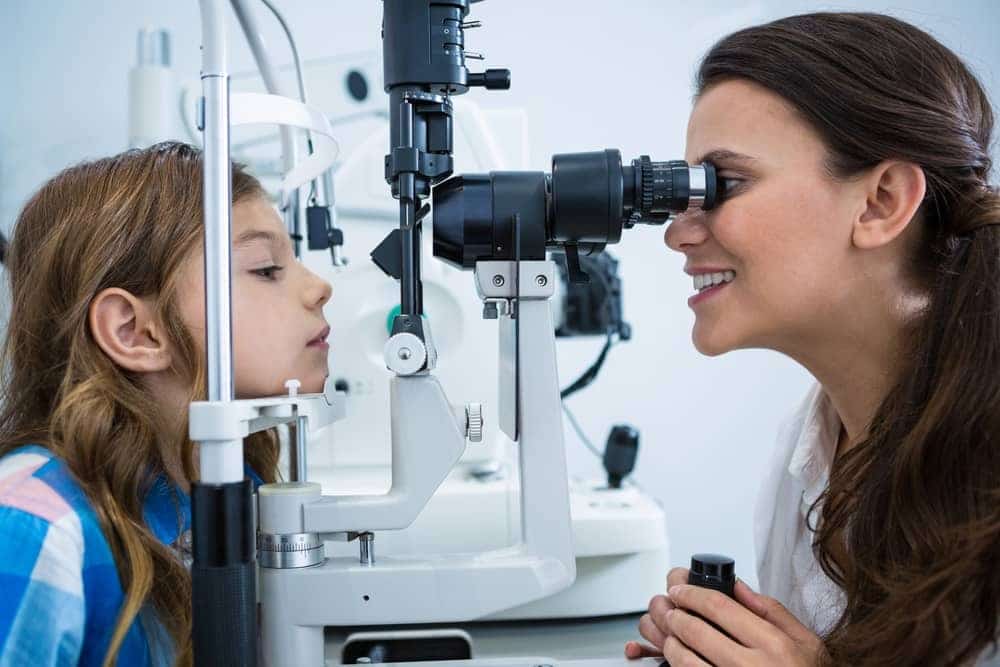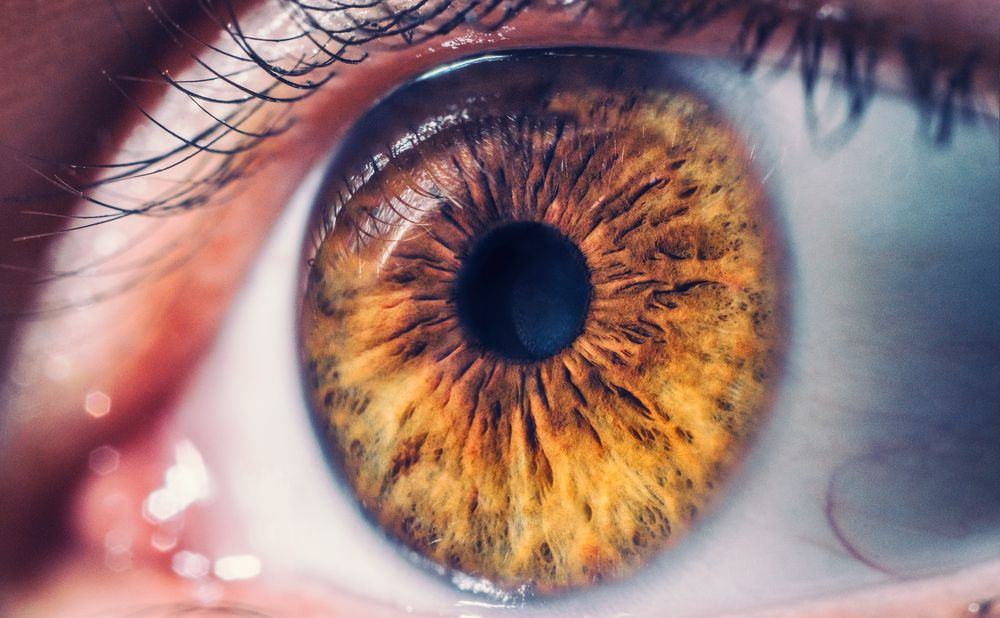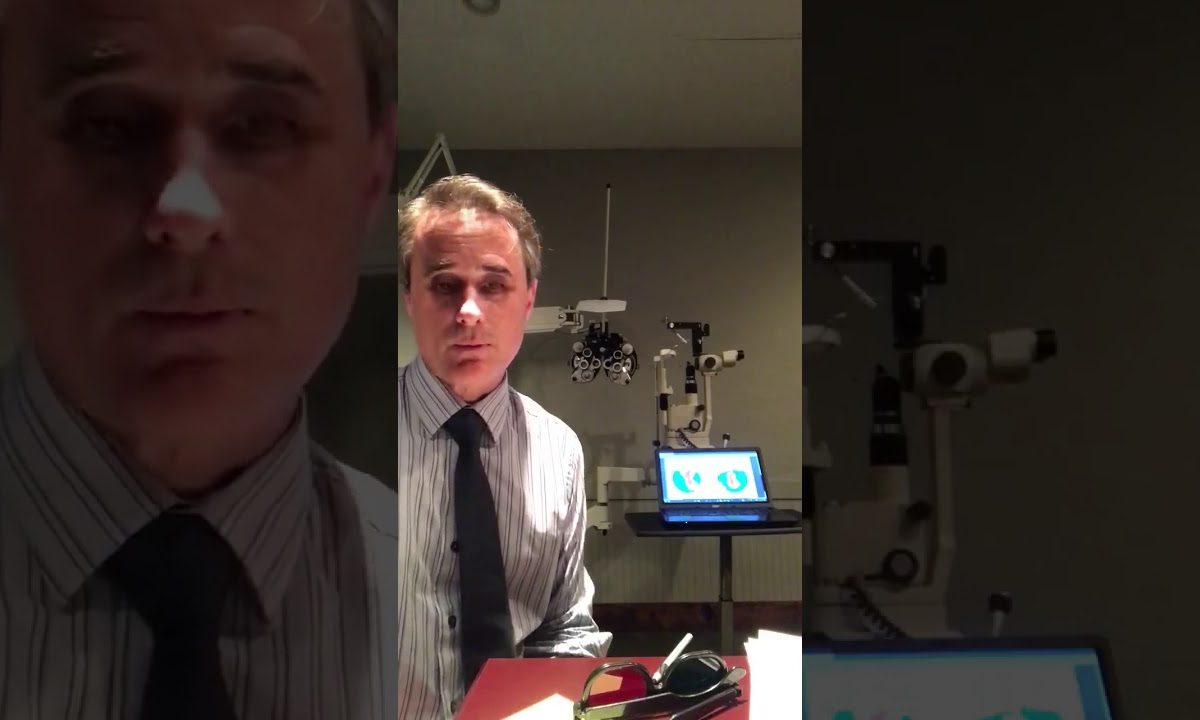All About School Vision Screenings
As a parent to school-aged children, it’s important to understand the difference between vision screening vs eye exam. Read why vision screening in schools doesn’t accurately assess vision.
All About School Vision Screenings
Most parents with school-aged children want their kids to have every opportunity available to them.
As we’ve just entered a new school year – whether in-person or virtual learning – make sure to not only prepare your child or children with the necessary school supplies, but also with the most important aspect of learning: proper vision.

Research shows that 80% of your child’s ability to learn effectively takes place through their vision, and that’s why an undiagnosed vision problem can cause major learning difficulties in even the most intelligent student.1
Did You Know? Vision Affects a Child’s Development and Ability to Learn
If you have noticed that your child is struggling in the classroom with common assignments and tasks – tasks that never used to pose problems in the past – the issue may not be their ability to comprehend, but rather a vision issue. Studies have shown that one in four children deal with a vision disorder that negatively impacts their ability to learn.
Since vision is vital to your child progressing naturally in their studies, kids who are forced to deal with an undiagnosed vision problem may:
- Display significant delays in early developmental skills
- Struggle to learn tasks as quickly as their peers
- Show noticeable delays in normal school functioning associated with both reading and writing
The fact of the matter is that by the time most kids enter school, it is estimated that one in four will need glasses or contact lenses to help them with a vision issue.Being aware of these stats and planning accordingly to have your child’s vision regularly tested is essential to identifying a potential issue and providing them with the necessary tools to achieve all their goals.2
Vision Screenings in Schools: What You Need to Know
While school screenings are well intentioned, the American Optometric Association warns that school vision screenings may not accurately gauge your child’s overall vision and eye health.
Failed Vision Screening at School
What do you do if your child failed vision test at school? Keep in mind that a big reason these types of preliminary screens don’t produce the greatest results is because they tend to solely focus on your child’s distance vision and completely disregard potential issues related to eye movement skills, their ability to properly focus, their peripheral awareness, their binocular coordination, and their near vision – which is critical for reading.
When it comes to a vision screening vs eye exam, our advice is to not stress about a failed vision screening at school – but to prioritize a pediatric eye exam. Most schools do their best to provide a thorough initial evaluation, but a school screening is not intended to replace a comprehensive pediatric eye exam conducted by a children’s eye doctor.
School vision screenings are regularly performed by the nursing staff who are highly trained in medical issues, but not always in vision screening.
Additionally, a school vision screen is typically a measure of central vision acuity, which neglects to assess multiple other areas of eye health and vision systems.
It is a common misconception that seeing well equates to no vision problems, but that could not be further from the truth.
Your child can have good vision and still deal with a vision problem that negatively impacts their coordination and learning skills, like comprehension, reading, and recollection. Due to the that fact that kids grow and develop so quickly, sometimes they may not even recognize that their eyesight has shifted and become problematic. It’s when this occurs that vision problems can go undiagnosed, resulting in learning problems that impact your child’s ability to progress in the classroom.
- A lack of confidence can easily result in frustration due to poor academic performance and potential regression in academic progress and learning abilities.
- However, by paying attention to the warning signs associated with vision problems, such as squinting, frequent eye rubbing, chronic eye redness and tearing, and sitting too close to the TV, you can address issues before they become too severe.
Early intervention is essential to not only avoiding longer vision problems, but it is also the key to maintaining your child’s confidence in the classroom.
Symptoms of Common Vision Issues in Kids
Some of the more common symptoms experienced and their corresponding diagnoses include:
| Diagnoses | Common Symptoms |
| Eye coordination problems |
|
| Farsightedness Astigmatism Nearsightedness |
|
| Eye focusing problems (inability to easily refocus eyes or maintain clear focus) |
|
Vision Screening vs Eye Exam
Understanding the difference between a vision screening and a comprehensive eye exam is important to identifying which is best for diagnosing vision problems that your child may be experiencing.
- A school vision screening is a relatively short examination that helps to identify the presence of a vision problem your child may be experiencing. It cannot diagnose exactly what is wrong with their eyesight, but it can indicate that an appointment needs to be made with a children’s optometrist.
Reading the letters on an eye chart is typically the most extensive portion of a vision screening.
- A comprehensive eye exam is an in-depth examination where your child’s visual acuity is assessed as well as potential color blindness and serious eye issues related to glaucoma and cataracts.
This is because the optometrist evaluates both the internal and external health of your child’s eyes through an in-depth assessment that takes into account prior vision issues, their current state of visual acuity, and potential vision problems. Common eye exam tests for children include:- Current refractive error measurement using retinoscopy
- Eye pressure measurement to identify glaucoma
- Eye health using a silt-lamp
- Visual acuity to measure the definition of your vision
- Blind spot detection using a visual field test
- Eye misalignment using cover tests
- Eye disease identification through pupil dilation
Ensure Your Child’s Vision is Developing Accurately with an Annual Pediatric Eye Exam
Is your child on an academic support plan and/or showing or talking about vision issues they’re experiencing? Has there been a failed vision screening at school?
It’s time to get a comprehensive pediatric eye exam by one of our children’s eye doctors. Get to know our team of deeply committed pediatric optometrists:
As the school year gets underway, be sure to schedule your child’s pediatric healthy eye exam today.
Hey, Kids! Did You Know Healthy Vision Starts with YOU?
Your eye health is just as important as the health of your body’s other systems. Use these 4 tips to take care of your eyes:
1. Eat Healthy.
Did you know that what you eat can directly help or hurt your vision? That’s right! When you eat a well-balanced diet – one with different types of fruits, vegetables (especially leafy greens like spinach, kale, and collard greens), and fish, you’re setting your eyes up for long-term health. Help your mom or dad make the next grocery list and be sure to ask if you can pick out extra fruits and veggies – and request salmon one night for dinner.
2. Get Moving.
You may know this already, but kids who exercise often have a healthier body weight than kids who don’t exercise as much. When you exercise, your body weight is more likely to stay in a healthy weight range. Being overweight can put you at higher risk for diabetes or other health conditions that can lead to vision problems.
3. Protect Your Eyes from Germs.
Germs can irritate your eyes and cause various infections. Try to keep your hands away from your eyes as much as possible. If you need to rub or touch them, always wash your hands before putting them close to your eyes. This is especially important if you’re putting in or taking out contact lenses.
4. Tell a Parent or Teacher If Your Eyesight Feels Different.
Are your eyes bothering you? Are you seeing things differently than you did yesterday or a week ago? Does your vision seem blurry? Do you feel like you’re squinting more than usual? Do you have a hard time seeing things at school? It’s very important to speak up if you feel like your vision isn’t right. Always tell a parent or teacher if you notice any changes in your vision.
References:
1 College of Optometrists in Vision Development. Signs & Symptoms of Learning-Related Vision Problems. Accessed September 14, 2020. https://www.covd.org/page/symptoms.
2 Intro Wellness. An Optician Reveals Her Best Glasses Tips. Accessed September 14, 2020. https://introwellness.com/eyes/glasses/best-glasses-tips/




